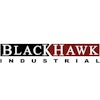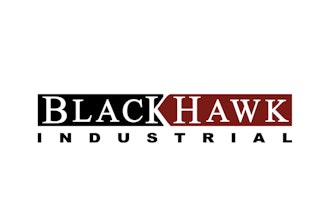
Every industrial supplier must go through it: developing an e-commerce site to compete in the digital age.
Our journey began at the end of 2014 and only after some resistance. But the payoff has been far more meaningful than we had anticipated. Largely that success has boiled down to the quality of our product content.
Many distributors I speak with focus 95 percent or more of their e-commerce efforts on the site itself and give little thought to the product content. We think that’s wrong. In our estimation, content is equally important. That’s how we provide true value to our customers and fend off the big-box competition.
In short: Better content drives more customers to your site, which translates into higher revenues and greater profits.
Marks Supply was a traditional bricks-and-mortar business in the plumbing and HVAC supply business when I arrived in 2011. At the time, the company had only a static, home-grown website: a digital presence, yes, but no way for customers to buy our product. Sales reps and branch managers in the field understood the urgency of an option that allowed contractors, plumbers and others to log on at the end of a long day on a job and, on their own schedule and in the comfort of their home, order what they needed.
I’d like to say that we immediately went to work adding an e-commerce element to our site. But it’s a story familiar to any techie who has gone to work for a traditional B2B distributor (our company has been around since 1962): Four years passed before I was able to convince some of my more cautious colleagues that an e-commerce presence was critical to our future success.
From the beginning, we understood that product content – descriptions, attributes, specs, images, manuals, etc. – was critical. Our customers have exacting specs and we needed to provide them with the same — if not better — information they could learn paging through product catalogs. We saw content as a potential leg up on the competition.
We originally thought we’d do the content ourselves. The company has some very strong product managers who we imagined would write the content. But with 12,000 SKUs of inventory to plow through, we realized that it would take us several years of effort — and that by the time we finished, much of the material would be out of date. We couldn’t do the data enrichment we knew we needed, at least not in a timely fashion.
At that point, we figured we needed to contract with both an enrichment provider and a second company that could help us build an e-commerce solution — and hope the two were compatible. A chance email led us to Unilog, a company that excelled at both. Its roots were in content creation and data enrichment — and yet my research showed that its e-commerce offering was strong and included intuitive search, a robust PIM (product information management), and integration with our ERP software — letting us tie e-commerce to our core business processes. After a brief trial period, the decision was made to go with a single vendor.
Happily, Unilog exceeded our expectations. We had expected a picture along with a basic description of the part. Instead, we received two or three layers of content for every product. There was the basic description we expected but also a detailed spec sheet, multiple pictures and, in some cases, 3D rendering, marketing videos and information about compatibility and potential alternative products.
We were live barely seven months after we started. Since then, we’ve slowly improved the site, adding several more thousand SKUs (but only those of products we keep in stock) and additional functionality.
Online sales have gone up every year since we went live — and content seems the main reason why. Customers tell us the quality of our content is what differentiates us from the competition and keeps them coming back. That had translated not only increased sales but cost savings as well. We figure we save roughly $2.50 for every line that a customer enters rather than one of our salespeople. Returns are 1/12th of what they are on a phone order — another huge advantage. Order size is 25 to 30 percent greater online than via other means.
Another benefit: type into Google a manufacturer’s part number for a product we sell on our site and many times Marks Supply is listed in the top few results, if not the top result.
Even customers who rarely buy online use the e-commerce site for research. That’s one reason, we think, that the revenues are increasing as well at our bricks-and-mortar locations (we have seven wholesale branches along with three upscale showrooms scattered throughout southwestern Ontario). Customers like what they see online and the next day they’re at one of our windows or on the phone with one of our sales reps.
 Grant Movold, IT Manager at Marks Supply Inc.
Grant Movold, IT Manager at Marks Supply Inc.These and other benefits are helping improve the company’s bottom line — and making us appreciate even more the old line, Content is king.
Grant Movold is the IT manager at Marks Supply, Inc., a whole distributor of plumbing and HVAC supplies based in Kitchener, Ontario, Canada.






















